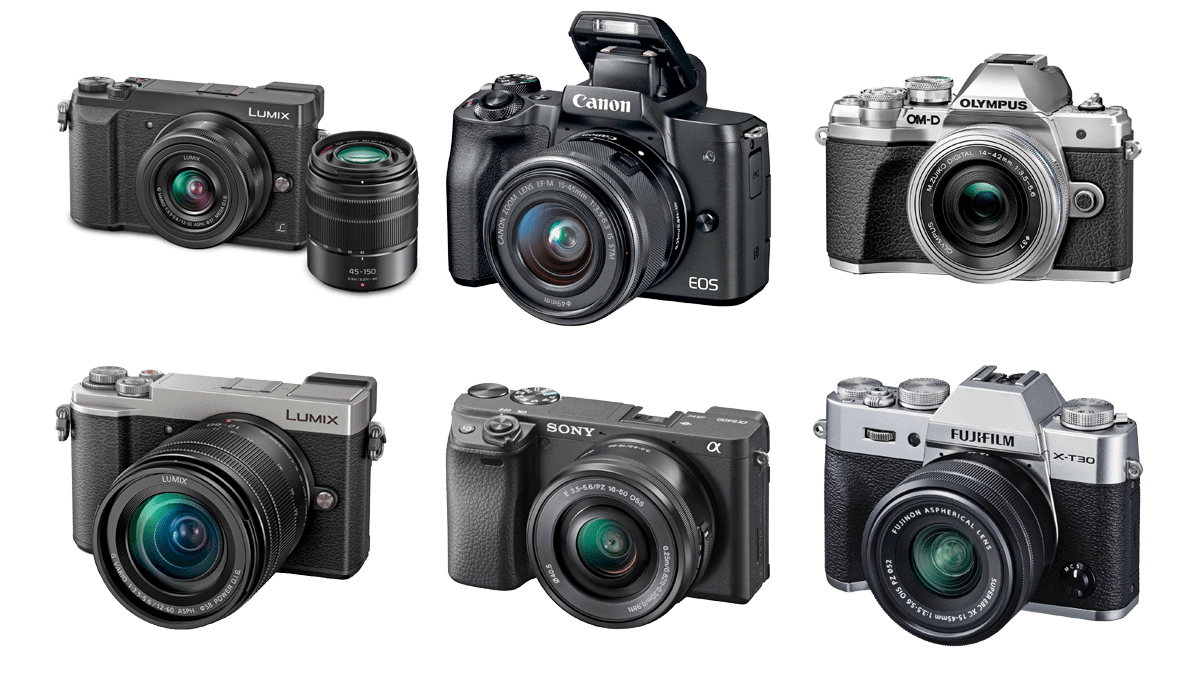Choose a camera for travelling and holidays of 2019 – compact, mirrorless, recording 4K video, with a viewfinder and a built-in flash one. What travel camera to buy in2019.
Summer 2019 has come – time for holidays and travels. You want to bring not only souvenirs, but also pleasant memories from a good trip and share these memories with friends and relatives. And of course the best way to do this is to show your photos and videos taken during your trip.
In the age of mobile photography, we are used to shoot photos and videos with smartphones in everyday life. But a smartphone will not be the best tool for photo and video shooting while travelling, because:
- With rare exceptions, smartphones lack the ability to magnify an image without losing quality, but if such an opportunity is present, the optical magnification occurs by switching smartphones cameras, and the tele-lens sensor often has a lower resolution than the main camera sensor.
- Smartphone cameras have a dynamic range of 8 bits or less, which negatively affects the shooting of contrasting scenes – for example, on a bright sunny day, bright areas of a photo or video will be overexposed, and the shadows will fail to black. Moreover, even if the smartphone has the ability to take pictures in the RAW DNG, it’s unlikely to save your shots, even in post-processing.
- Due to the fact that the size of the camera sensor is small, you can not make high-quality photos or videos in the dark. The picture will be noisy because of the increased exposure, it is also blurred. If you want to take a picture with a blurred background (bokeh), this is done with the help of artificial processing by a smartphone processor and with such processing artifacts often occur, and the picture looks unnatural due to a sharp change of sharpness and background blurring. And shooting video with “bokeh” in the current development of the smartphone-building is generally impossible at all.
- The smartphone battery capacity is limited and will be spent not only for calls in a remote location from cellular base stations, but also for photo-video shooting. And to recharge the battery in the journey is not always possible.
So, if you decide that you still need to buy a travel camera, let’s formulate the main criteria for a travel-friendly camera:
- compact and light weight
- battery life
- enough camera megapixels
- the ability to shoot 4K video
- built-in viewfinder for shooting on a bright sunny day
- built-in flash for shooting in the dark and in bright back daylight
- optical zoom
- video image stabilization
- desirable to be able selfie shooting.
In addition, I will clarify the importance of 4K video. We’re going to keep the memory of the event for a long time. But it will be a shame, you see, in five years so that everything was filmed “in this unsharp FullHD” 🙂
We will choose cameras based on prices in the B&H Photo store (we can also buy them in other stores). Let’s sort cameras by price and include 3 filters:
- 4K video shooting
- built-in viewfinder
- built-in flash.
And we get in this way a rating of cameras for travel 2019 at a price of up to $ 1,000 (inclusive) of essentially 6 cameras.
Essentially because:
- Lumix G7 is obsolete
- Lumix G85 is not so compact
- Lumix GH4 – outdated video camera
- Fujifilm X-T100 in fact can not record 4K video
- Fujifilm X-T20 is outdated technically.
DSLR cameras are not considered, as in cheap compact DSLRs there is a small dim viewfinder, with the exception of Pentax, but Pentax itself is still an exception…
Compact cameras with non-interchangeable lenses are also not considered, due to the overpriced. There is an exception in this segment – the Lumix LX100, but you can only buy it if you have a service center nearby that can clean the dust that accumulates between the sensor and the fixed lens of this camera.
Places in the ranking are distributed according to a single criterion: the price per kit of camera + lens.
1. 500 USD – Panasonic Lumix DMC-GX85 with lenses 12-32 mm and 45-150 mm
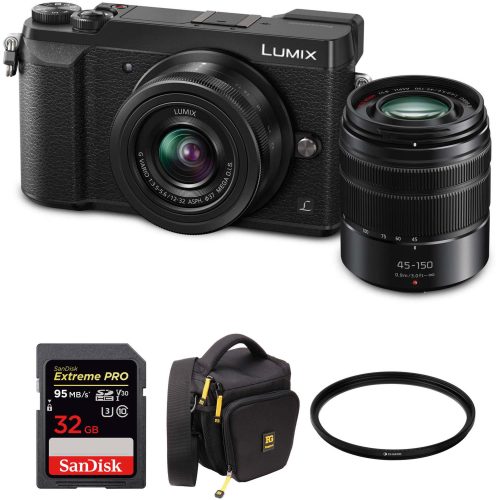
Lumix GX85 (GX80) is a compact system camera of the Micro 4/3 format, released by Panasonic in July 2015 as a competitor to the Sony A6000 in a similar last form factor.
Yes, the camera is more than one year old, but it is still relevant due to its size, technical characteristics and price.
The camera has many advantages and only 3 drawbacks:
- 16 MP sensor (when cropping 3:2 – approximately 14 MP)
- no mic input
- poor autofocus when shooting video.
The fact that the dynamic range of the camera sensor is only 12 bits is not so scary in practice, since the photos from this and other 12-bit cameras are well drawn in RAW converters such as Adobe LightRoom.
But this is the cheapest camera in this review with two lenses included. Also, when you buy at the B&H Photo store, you receive a gift bag, a memory card and a UV filter.
2. 650 USD – Canon EOS M50 with a 15-45/3.5-6.3 lens
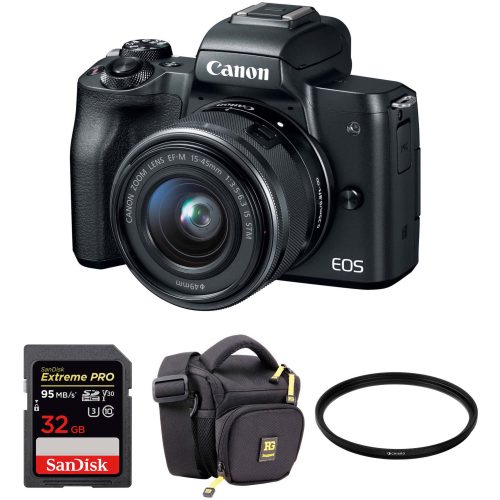
Canon M50 is a simplified version of the mirrorless APS-C Canon EOS M5.
This is the only camera in the review with a flip-out screen, which is very convenient when traveling. Besides the fact that you can shoot selfies and video blogs, this screen when folded is protected from scratches and other mechanical damage by the camera body.
M50 shoots great photos, the camera has the best autofocus when shooting video among the cameras of this review.
But the sharpness of the video in the M50 is the worst of the six cameras, while shooting in 4K happens to crop and not working Dual-pixel AF. That is, when shooting in 4K, the AF focus is essentially only contrast and worse than that of the Lumix and Olympus cameras.
At the same time, it is the cheapest of the APC-S cameras of our review itself, and when you buy at the B&H Photo store, by the link above you will receive a photo bag, a memory card and a UV filter as a gift.
It can also be noted that in the Canon product range there is an adapter to the optics of the EF-M’s drop-in SLR cameras on the EF-S, which gives access to a large range of cheap used lenses.
This is also the only camera from the review, which has a well-designed camera strap mount. There are no “rattles” that in other cameras can spoil the sound when shooting video on the microphones built into the cameras.
The camera control menu is also the most convenient, which will be especially comfortable when traveling in “gallop across Europe” style 🙂
3. 650 USD – Olympus OM-D E-M10 Mark III with a 14-42mm EZ lens
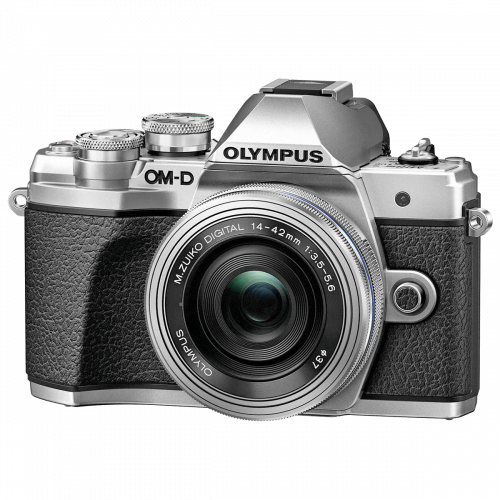
Olympus is positioning its E-M10 M3 as “perfect for traveling”. And if you do not need a microphone input, you are not afraid that the resolution of the 16 MP camera sensor, you cannot take a selfie with this camera and you are satisfied that the built-in flash cannot be deflected upwards, then this is most likely an ideal travel camera.
Democratic price tag and a great body design add perfectness to this camera. But ergonomics is a little worse, and only for one reason – the camera switch is on the left side of the case and the camera cannot be turned on with one hand.
At the heart of the camera – the same Live MOS sensor manufactured by Sony, as in the camera Lumix GX85.
The camera is suitable for those who, in addition to the photo, also like to shoot video, since the Olympus cameras are considered the best on the market for mirrorless cameras with in-body image stabilization (IBIS). And as it is in-body stabilization, you can use not only native lenses, but also third-party lenses (for example, Sigma), including the Soviet penny lenses using the MFT – M42 adapter.
But with autofocus in the video will be the same nuances as the Lumix cameras: excellent autofocus when shooting and poor tracking autofocus when shooting video.
4. 800 USD – Panasonic Lumix DC-GX9 with a 12-60 mm lens
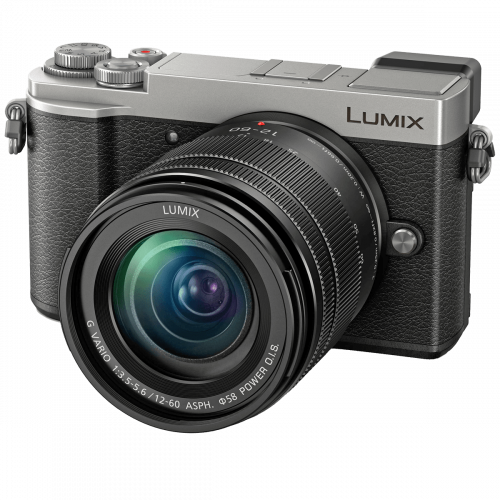
Lumix GX9 camera has replaced Lumix GX8 camera, while the change of generations was not good for the GX line. The camera was a step backwards for the sake of downsizing and marketing.
So compared to the GX8, the following deterioration occurred:
- lower capacity battery
- removed the microphone input
- screen does not rotate in the selfie position.
Of the improvements – added a built-in flash.
Therefore, if you like Lumix GX series cameras, it is better to find a Lumix GX8 camera on the secondary market, while the price tag on the Lumix GX8 on the secondary market may be around $ 600 for a case with a 14-42 II kit lens.
But the indisputable advantage of the kit GX9 + lens 12-60 is the multiplicity of 5x optical zoom, which can be useful more than once during a trip. At the same time, the lens is sharp across the entire focal length range, although it has a variable aperture when zooming.
A feature of this camera is a flip-up viewfinder, which can be useful when taking macro shots on a bright sunny day and for shooting street photos in countries where a law has been passed prohibiting shooting people without their consent.
5. 1,000 USD – Sony Alpha a6400 with a 16-50 mm lens
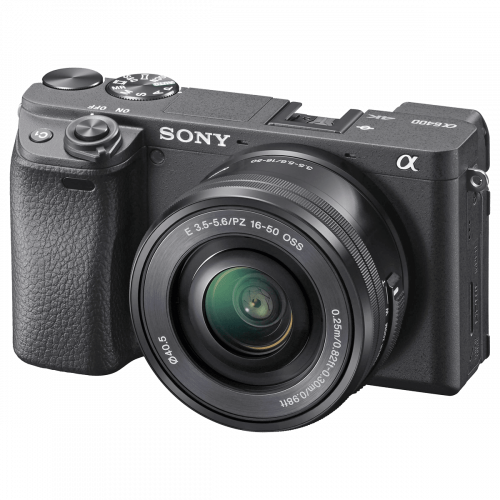
With the A6400, we cross the psychological barrier of $ 1,000. At the same time, we do not consider its predecessor A6300, as the A6300, from the traveler’s point of view, has 2 problems – it is overheating when shooting video and the fact that the camera screen when shooting video in 4K reduces its already mediocre brightness.
The camera has the most light-sensitive sensor from the six cameras monitored and at the same time one of the worst cameras monitored by the kit lens SELP1560, which was developed for cameras with a resolution of 16 MP and without modifications continues to be used as a kit lens with 24-megapixel cameras .
The lens also has a vignette (dimming the corners of the frame) at a focal length of 16 mm, which is noticeable when taking photos in RAW. When shooting a video, this effect is invisible, as the frame is obtained with an aspect ratio of 16:9.
Therefore, if your budget is not so limited, it is better to buy a Carl Zeiss-SEL1670z lens for this camera, for example, in the secondary market .
The camera is universal: it takes both a photo and video with excellent autofocus, dynamic range and color reproduction.
6. 1000 USD – Fujifilm X-T30 with a 15-45 mm lens
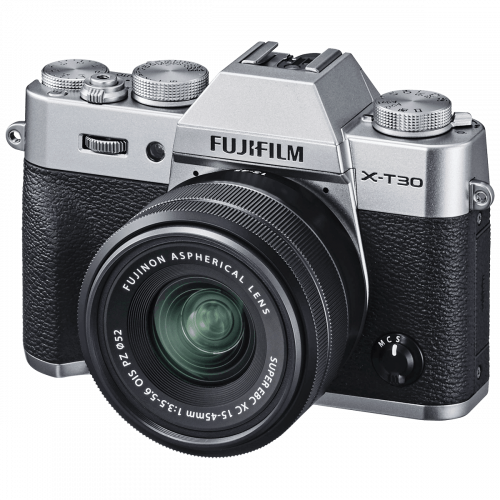
Fujifilm X-T30 camera has been released quite recently and is a simplified version of the X-T3 camera .
X-T30 has excellent autofocus, speed, shoots sharp video in both FullHD and 4K, and jpg files made with this camera will be least need to be processed compared to other cameras reviewed in this article.
A full list of camera specifications can be found by clicking on this link (use Google Translate or see source below that article). At this link you can see video reviews on the X-T30. Pay attention that for $ 1300 the camera is on sale with more high-aperture lens 18-55/2.8-4.0.
Please note that the camera has a non-standard microphone input – 2.5 mm jack. If you plan to use an external microphone, do not forget to buy an adapter from 2.5 mm to 3.5 mm jack before you travel. On any radio market, it costs about $ 1.
The following is a summary of the key features of the cameras in the order of 1-6, correspondently, according to their rating in this article:
- Lumix DMC-GX85
- DSC M50
- Olympus OM-D E-M10 Mark III
- Lumix DC-GX9
- Sony Alpha a6400
- Fujifilm X-T30
| Function / Camera # | 1 | 2 | 3 | 4 | 5 | 6 |
| Resolution of sensor, MPix | 16 | 24 | 16 | 20 | 24 | 26 |
| Dynamic range of photos, bit | 12 | 14 | 12 | 12 | 14 | 14 |
| Compactness of the camera body, cubic inches | 23 | 37 | 30 | 25 | 29.3 | 28 |
| Frames on one charge according to CIPA * | 270 | 235 | 330 | 250 | 360 | 380 |
| In-body image stabilization, IBIS | + | – | + | + | – | – |
| Optical stabilization | + | + | – | + | + | + |
| Ability to self shooting | – | + | – | – | + | – |
| Flash may be turned up | + | – | – | + | + | – |
| Mic input | – | + | – | – | + | + |
| Direction of the built-in microphones forward | – | + | – | – | + | + |
| Comfortable grip | – | + | – | – | + | – |
* CIPA information in the table is given according to the website imaging-resource.com for all cameras, with the exception of Sony A6400. For A6400 information on CIPA according to thephoblographer.com. The worst value for each camera is mentioned above.
The volume of the cameras is specified in cubic inches solely for the sake of clarity comparing the dimensions of the cameras.
If you go on a trip, you will also have to buy a couple of extra batteries for your camera, a charger that can charge these batteries from USB, and a power-bank. This will increase the autonomy of your camera away from the 220 VAC power network.
If the camera’s built-in microphones are directed upwards, the wind blows in them more strongly, which interferes with video recording. It is better when the microphones of the camera are directed forward, especially since the sound source is most often located in front of the camera.
Also, if your camera has a microphone input, you can take along an inexpensive wind protection of microphone with a ”dead cat”, which will save the sound tracks of your videos taken during the journey from wind noise and extraneous sound sources.
The built-in flash, which can be tilted up from the optical axis, is convenient when traveling, since it is possible not to over-illuminate the object of the shooting and not create hard shadows behind the object when shooting with the flash.
For traveling, it is better to buy a camera that is not black, since in this case the camera will absorb less sunlight falling on it and, accordingly, less heat from it.
Put a UV-filter on the lens, even if it is the cheapest lens. So you will reduce the influence of hard sunlight on the quality of photos, do not scratch the front lens of the lens in the journey. And the filter is easier to wipe off dust and fingerprints than the front lens of the lens.
If you allow the amount of luggage, then in addition to the camera, you can take a trip and a camera flash of small dimensions, such as the Meike 320 or Godox TT350 .
© 2019 Andrew Lazarev Production – Videographer, photographer and video editing in Kharkiv and Kharkiv region. Blog of photographer. Blog of videographer.
